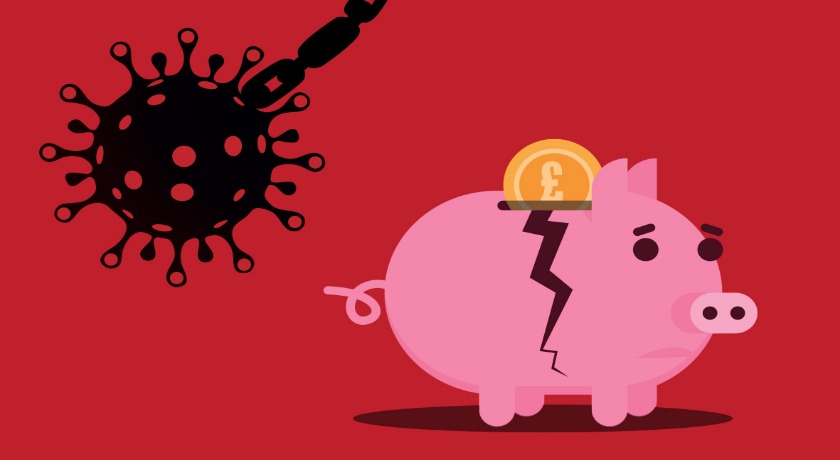 How the pandemic has affected the charity sector by Stephen Tomkins
How the pandemic has affected the charity sector by Stephen Tomkins
The coronavirus pandemic has been overwhelming for charities. Lockdown has devastated fundraising, whether through events, personal giving, shops and contracts. At the same time, many charities faced a sharp increase in demand. Coming on top of a decade of governmental austerity, the prospect is grim.
British Heart Foundation has reported losses of £10m a month since all of its 750 shops went into lockdown, and has had to halve its research budget. Comic Relief announced in July that it is making a quarter of its 240 staff redundant, as part of £5m in cuts. The global development charity, African Initiatives, is shutting down. St John Ambulance, facing a deficit of £25m, announced the closure of 117 of its 352 buildings, with a second review to follow in the autumn, and 250 redundancies.
Christian Aid expects a £6m shortfall in 2020. Breast Cancer Now says it will have to spend at least £2m less than planned on research next year.
The loss of the London Marathon was a blow across the sector, as it raised £66m in 2019. Hospices have reported a fall in income of £70m a week, say Civil Society News.
A report in August by the Small International Development Charities Network found that 45% of its charities expected to close this year unless they receive additional funding, even while 72% reported an increased demand for their services. In another report, more than half of animal charities surveyed said that their income had fallen by 50% or more.
On average, charities expect to see their total income this year 24% lower than forecast, according to the Institute of Fundraising, a loss of £12.4bn in total. The charities thinktank New Philanthropy Capital (NPC) has counted 5,698 redundancies across the UK charity sector in 2020, more than half of them in arts and culture. Paradoxically, health charities have also been disproportionately hit by the pandemic, especially medical research, as donors have prioritised other causes.
In this storm of bad news, the UK government’s £750m fund to support charities has been very welcome. The amount is vastly more than the £40m offered to charities after the wake of the 2009 financial crisis.
Nevertheless, that £750m has not been evenly distributed. Analysis by NPC found that the government prioritised "the charities that, if they were to go under, it would fall on the treasury to pick up the tab," in the words of Will Hanford, Communications Manager at the thinktank.
This, he says, rightly includes causes made more pressing by the lockdown, such as domestic violence and food poverty. "But it wasn’t a bailout. It didn’t consider the long-term survival of charities. Many of the charities struggling now wouldn’t have had access to this money."
Some charities will fail, says Hanford, and it will not be because they are failing to provide valued services. "The charity sector doesn’t have the same market forces as the private sector. It doesn’t have 'customers' in the same way, because the beneficiary is usually not the one paying for the service. A charity might be making a major impact in the lives of beneficiaries, but their survival depends on donors. Even with costcutting and government support, the funding gap remains daunting. The government won’t bail out the causes you care about, so if you value them, fund them."
There are grounds for hope, however, according to Goodbox, an organisation that supplies fundraising technology to charities, and has published a report, ‘Charities and Coronavirus: Weathering the storm.’ The 2008 crash also meant crisis for charities, and, by 2010, 16% of small charities said they were at risk of closure; and yet by 2012 the ‘death rate’ of medium-sized charities had increased by only 0.7% over the previous four-year period.
"Everyone catastrophises in these situations, which is completely natural," says Polly Gilbert, Marketing Director of Goodbox. "But charities are different from companies in that most hold quite large reserves which in previous recessions have managed to see people out. And people don’t stop giving during a recession. Charities just need to find a way to communicate and look in the right places. In the pain, there is hope. Charities are facing challenges they haven’t faced before, but they also have more tools than ever before."
One creative response to the crisis can be seen in City Giving Day, an annual fundraising event in the City of London, run by the Lord Mayor’s Appeal. In 2019, it raised an estimated £500,000 for charities through events in and around offices, but this year that is impossible. So, instead, employees are invited to issue online challenges to each other – to run 10k or eat a slice of lemon without grimacing – and donate money as part of the challenge. The plan is to achieve the same level of engagement as in the past, but purely online.
AgeUK offers a range of creative fundraising ideas for supporters: Donate the money you’ve saved by not buying a daily coffee under lockdown; challenge friends and family to reach 10,000 steps a day; host a Zoom quiz; get sponsored to grow your hair out, or shave it off.
British Heart Foundation offers fundraising pages for supporters willing to take a cycling challenge or give up chocolate for October – and help out their own heart in the process.
All We Can is rolling out a five-year programme to help vulnerable communities pool their resources, achieve self-determined change and develop greater resilience, in the face of lean years to come for international development budgets.
Christian Aid adapted Christian Aid Week in May, replacing house-to-house collections with an ‘e-envelope’ that supporters passed on to neighbours, friends and family. It could be personalised with images or video clips and could include a fundraising target so people could receive progress updates by email.
"Our e-envelope did extremely well," says Chine McDonald, the charity’s Head of Community Fundraising and Public Engagement. "We are looking to continue to use digital envelopes in upcoming appeals. Despite these challenges, we were blown away by the response from our supporters who adapted to online fundraisers, events and quizzes. We so appreciate the churches, volunteers and individual givers who rose to the challenge of one of the trickiest years we have seen in our 75-year history."
Stephen Tomkins, is the Editor of Reform. The November edition of the magazine will be published on 25 October.
Subscribe and get Reform digitally, on paper, or both, from £5.99.
Published: 19 October 2020




